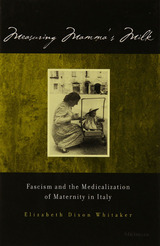3 books about Gaeta, Saverio

Living Medjugorje
Saverio Gaeta
St. Augustine's Press, 2025
In the spirit of the Jubilee Year 2025, this book does for Medjugorje, Bosnia-Herzegovina, what Living the Jubilee does for Rome, Italy. Pope John Paul II called Medjugorje "the spiritual center of the world," and the Vatican Dicastery for the Doctrine of the Faith has recently stated that what is happening in Medjugorje is at the very least authentic "by its fruits." This is the highest form of official approval for a claims regarding supernatural phenomena.
What is happening in Medjugorje and why do hundreds of thousands of people visit each year? In June of 1981, the Blessed Virgin Mary, Mother of God, began appearing to six young people with messages above all of peace and conversion. She calls herself the "Queen of Peace," and these apparitions have continued to this day. First coming to the children in the rocky hills outside the small city ravaged by war and Communism, throngs of pilgrims walk the unfriendly trails to the original spot every day of the year and often with bare feet. The miracles and spiritual experiences attributed to this place are impossible to count.
The pilgrimage to Rome is historical and deeply woven into the custom of piety and devotion in the Catholic Church. But for the post-modern world, Medjugorje is the pre-eminent 'destination' for all people seeking to encounter God, especially those who have fallen away or have no religious affiliation. The Jubilee Year will bring many more to Medjugorje and Saverio Gaeta's guidebook provides a necessary service of how to do it and what to do while one is there. The introduction to the English edition is provided by the official chaplain to English-speaking pilgrims, Leon Pereira.
There are over 200 color photographs and graphs.
What is happening in Medjugorje and why do hundreds of thousands of people visit each year? In June of 1981, the Blessed Virgin Mary, Mother of God, began appearing to six young people with messages above all of peace and conversion. She calls herself the "Queen of Peace," and these apparitions have continued to this day. First coming to the children in the rocky hills outside the small city ravaged by war and Communism, throngs of pilgrims walk the unfriendly trails to the original spot every day of the year and often with bare feet. The miracles and spiritual experiences attributed to this place are impossible to count.
The pilgrimage to Rome is historical and deeply woven into the custom of piety and devotion in the Catholic Church. But for the post-modern world, Medjugorje is the pre-eminent 'destination' for all people seeking to encounter God, especially those who have fallen away or have no religious affiliation. The Jubilee Year will bring many more to Medjugorje and Saverio Gaeta's guidebook provides a necessary service of how to do it and what to do while one is there. The introduction to the English edition is provided by the official chaplain to English-speaking pilgrims, Leon Pereira.
There are over 200 color photographs and graphs.
[more]

Living the Jubilee
Saverio Gaeta
St. Augustine's Press, 2025
Pope Francis has declared the Jubilee Year 2025 a celebration of both mercy and hope, merging his own favorite theme with John Paul II's call in 2000 for all mankind to enter the new millennium with the light of Christian hope. The motto of the Holy Year 2025 centers on the image "pilgrims of hope." Visits to sacred places––especially in Rome––is a principal expectation and much has been organized in the Eternal City to welcome visitors. Pilgrims are encouraged to rekindle their light by returning to some of the most important churches for the Christian faith, which have served as sanctuaries of worship for centuries. The way of the pilgrim is a search for God, and places that belong to shared Christian faith feature prominently in this pursuit. The only way to realize a peaceful future is to advance in the conviction that what awaits us is full of life because the God of the past and present awaits us there.
Saverio Gaeta provides a concise and insightful history of Jubilee celebrations, tracing the custom to biblical norms and following developments up to present day. Jubilees are joyous remembrances of God's consistent paternal intervention in human life, and a time to acknowledge a common orientation toward the encounter with his Son, Jesus Christ, who brings salvation and life in the Trinity.
Living the Jubilee is indispensable for the reader who wishes to embark on a journey of faith, to live as a pilgrim and not tourist in this life. Gaeta inspires everyone to partake of the Jubilee celebrations. He also provides everything a traveler to Rome needs to know to make this trip––public transportation routes, event schedules, how one acquires the Vatican-issued pilgrim card and tickets needed to attend many of these events, plus much more. Even if readers do not make the voyage to Rome, Gaeta's account of the Jubilee in the Catholic Church is a wondrous display of thousands of years of tradition and history that has never lost a sense of joy and gratitude for the God who remains among us. It is a remarkable keepsake and helpful even for Jubilee celebrations in parishes and local communities.
Saverio Gaeta provides a concise and insightful history of Jubilee celebrations, tracing the custom to biblical norms and following developments up to present day. Jubilees are joyous remembrances of God's consistent paternal intervention in human life, and a time to acknowledge a common orientation toward the encounter with his Son, Jesus Christ, who brings salvation and life in the Trinity.
Living the Jubilee is indispensable for the reader who wishes to embark on a journey of faith, to live as a pilgrim and not tourist in this life. Gaeta inspires everyone to partake of the Jubilee celebrations. He also provides everything a traveler to Rome needs to know to make this trip––public transportation routes, event schedules, how one acquires the Vatican-issued pilgrim card and tickets needed to attend many of these events, plus much more. Even if readers do not make the voyage to Rome, Gaeta's account of the Jubilee in the Catholic Church is a wondrous display of thousands of years of tradition and history that has never lost a sense of joy and gratitude for the God who remains among us. It is a remarkable keepsake and helpful even for Jubilee celebrations in parishes and local communities.
[more]

Who Believes Is Not Alone
My Life Beside Benedict XVI
Georg Gänswein
St. Augustine's Press, 2023
The collaboration between a future pope and young prelate is transformed into profound friendship when circumstances thrust Joseph Ratzinger into the Apostolic Palace, even as he expected to be released in retirement to his beloved Bavaria. Monsignor Georg Gänswein never left his side, and witnessed one of the most influential people of this century conduct his papacy on both sides of the curtain. From his appointment as private secretary in 2003, which was meant to be temporary, until the abdication of the pope in 2013 and subsequent years as emeritus, Monsignor Gänswein walked the same steps and weathered the same storms as his dear friend, the Roman Pontiff Benedict XVI. Here he offers the truth regarding the man and the papacy as a spiritual testament of a pope whose formidable legacy is often subject to unfounded characterizations of rigidity and secrecy.
Written with the involvement of the regarded Vaticanista Saverio Gaeta, Mons. Gänswein offers an account of a particular decade in history and confronts false claims of intrigue and cover-up (Vatileaks, the Orlandi abduction case, the sexual abuse scandal, among other issues) to tell the real story of a pope who faced a changing landscape and a public who largely misunderstood him and his style of governance. Here we meet one of the most affable and intellectually formidable popes the Catholic Church has ever known, and a priest who might also be considered a prophet of the post-modern age. Gänswein brilliantly contextualizes many of Benedict's most poignant theological positions, and in giving us a sense of their origin reveals that Benedict seamlessly lived everything he promulgated. His faith was the single bulwark upon which his personality as both teacher and leader were built. No biography has yet to establish the integrity and heart of Joseph Ratzinger as well as his friend, Georg Gänswein, does here.
As a spiritual testament more than just a journalistic exposé, Gänswein provides something only he can give––namely, the candid intelligence and sanctity witnessed up close. This is a remarkable and singular contribution to the history of the papacy and the record of the life of a saint. As Gänswein asserts, knowing this man is to encounter heroic virtue and an invitation to meet God, the greatest lover of mankind. Pope Benedict's own friendship with God will continue to provide warmth for as long as there are people on this earth who believe.
Written with the involvement of the regarded Vaticanista Saverio Gaeta, Mons. Gänswein offers an account of a particular decade in history and confronts false claims of intrigue and cover-up (Vatileaks, the Orlandi abduction case, the sexual abuse scandal, among other issues) to tell the real story of a pope who faced a changing landscape and a public who largely misunderstood him and his style of governance. Here we meet one of the most affable and intellectually formidable popes the Catholic Church has ever known, and a priest who might also be considered a prophet of the post-modern age. Gänswein brilliantly contextualizes many of Benedict's most poignant theological positions, and in giving us a sense of their origin reveals that Benedict seamlessly lived everything he promulgated. His faith was the single bulwark upon which his personality as both teacher and leader were built. No biography has yet to establish the integrity and heart of Joseph Ratzinger as well as his friend, Georg Gänswein, does here.
As a spiritual testament more than just a journalistic exposé, Gänswein provides something only he can give––namely, the candid intelligence and sanctity witnessed up close. This is a remarkable and singular contribution to the history of the papacy and the record of the life of a saint. As Gänswein asserts, knowing this man is to encounter heroic virtue and an invitation to meet God, the greatest lover of mankind. Pope Benedict's own friendship with God will continue to provide warmth for as long as there are people on this earth who believe.
[more]
READERS
Browse our collection.
PUBLISHERS
See BiblioVault's publisher services.
STUDENT SERVICES
Files for college accessibility offices.
UChicago Accessibility Resources
home | accessibility | search | about | contact us
BiblioVault ® 2001 - 2025
The University of Chicago Press









